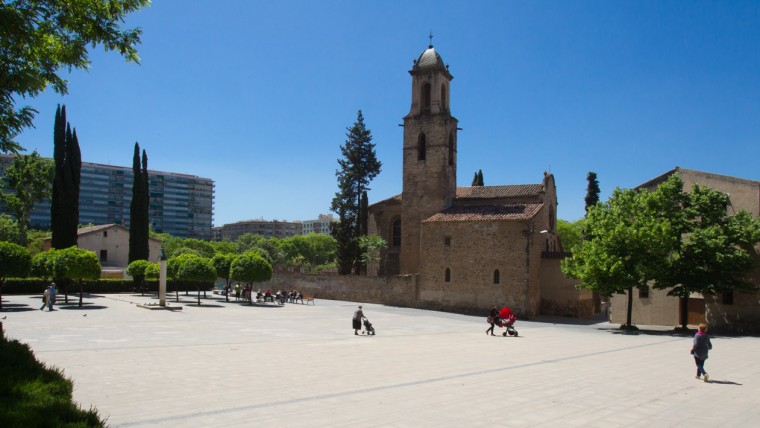
The largest part of the park is like an irregular-shaped triangle, completely covered in grass and full of sparse trees. There is little paving, only what is necessary for crossing the triangle from one end to the other or skirting around it and providing access from Ronda de Sant Martí.

History
The park was created on some old crop fields among the many that occupied a good part of the Sant Martí district up to the mid-20th century, one of the last bastions of Barcelona’s agricultural past. Part of the old Verneda de Sant Martí, which, by the 16th century already consisted of the Sant Martí de Provençals parish church, the rectory, the inn, the farms and other rural buildings scattered around the area.

Art and Architecture
As you enter from C/ Agricultura, at the other end of a large square, you will find the Sant Martí parish church. This is a unique part of the park, where what stand out above all are the architectural features that have survived over the years: the church and the farms Can Cadena, Can Planas and Ca l’Arnó , which currently house several district facilities.
Can Cadena has one of Barcelona’s urban allotments, boasting 16 plots cultivated by the district’s senior citizens and occupying a total of 800 m2. There is also an area set aside for farm animals, another for compost and a classroom for training in organic agriculture.
This has made it possible for Parks and Gardens to offer schools activities under the environmental education programme that are designed to introduce biological agricultural techniques and the most common farm animals to children, such assheep, chickens, geese and rabbits.
Another environmental aspect worth noting is the farm’s solar-panel power station, which generates close to 8,724 kWh per year, the equivalent to an annual energy consumption of four 80 m2 rooms. The energy produced enables an annual saving of 940 kg of CO2 emissions into the atmosphere.
-
- Phone number
- Tel.: 010
-
- Accessibility
- Accessible for people with physical disabilities
-
- Titularity
- Public center
- Address:
- C Menorca, 64
- Districte:
- Sant Martí
- Neighborhood:
- Sant Martí de Provençals
- City:
- Barcelona
- Sections of this equipment
- Àrea de joc infantil Open in a new window
- Àrea de joc infantil Open in a new window
- Àrea de joc infantil Open in a new window
- Taules de ping-pong Open in a new window
- Pistes municipals de petanca Open in a new window
- Cistelles de bàsquet Open in a new window
- Àrea de joc infantil Open in a new window
- Àrea d'esbarjo per a gossos Open in a new window

